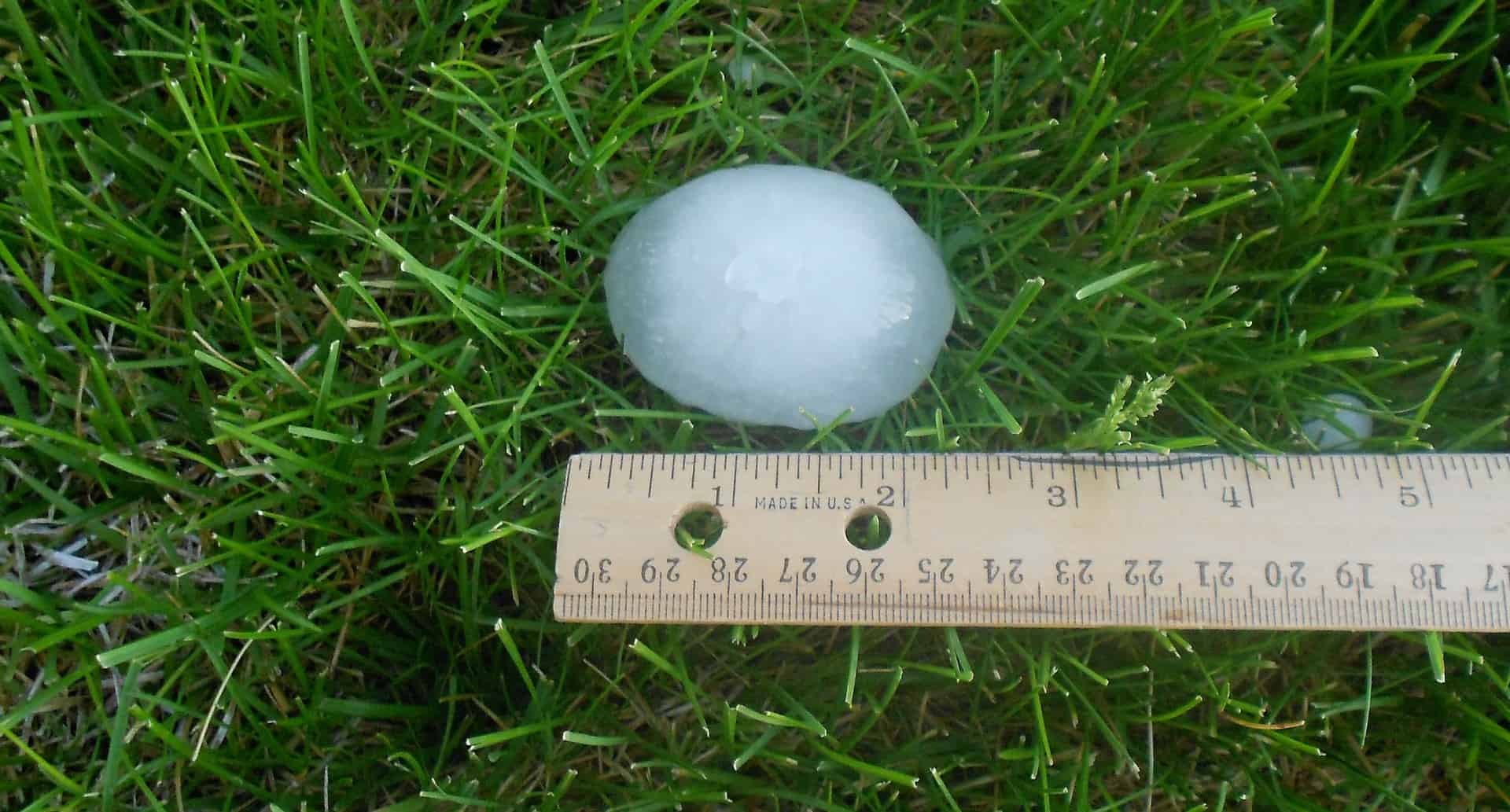Here in Colorado, early summer months bring us storms & hail damage- which can cause a lot of damage and put a real ‘dent’ in our summer vacation.
This precipitation can present itself in all different size and shapes; from little tiny pellets to destructive massive grapefruit- sized chunks of ice falling out of the sky. Obviously, the larger the hail, the more damage it does. Beware of hail that is ping-pong ball sized and up, as these tend to cause the most damage.
But, don’t underestimate the little guys. A chunk of hail the size of a marble falls at roughly 20-mph based off of The National Severe Storms Laboratory predictions. Parts of a roof being pelted over and over by a 20-mph hard object could very well still cause damage to a roof or other structures.
So how many different types of hail are there? Here are some documented hail sizes that have rained havoc on Colorado over the years:
- Pea = 1/4 inch diameter
- Marble/mothball = 1/2 inch diameter
- Dime/Penny = 3/4 inch diameter
- Nickel = 7/8 inch
- Quarter = 1 inch
- Ping-Pong Ball = 1.5 inches
- Golf Ball = 1.75 inches
- Tennis Ball = 2.5 inches
- Baseball = 2.75 inches
- Tea cup = 3 inches
- Grapefruit = 4 inches
- Softball = 4.5 inches
A piece of hail the size of a quarter is when your property is most susceptible to sustaining some damage. Following a storm with this size of hail, it will be important for you to assess your property for hail damage. Read our blog, “Checking Your Property for Damage after a Storm”, to know what to check for, or contact us to come out and do a professional assessment of your property.
.First General Services Emergency Response Teams are available 24/7 to help you through the entire repair and restoration process.
Denver Metro 303-646-2162
Colorado Springs 719-635-6789
References
Beaver, D. (2018, February 12). All About Hail. Retrieved from Bone Dry: https://www.bonedry.com/about-us/news-and-events/30946-all-about-hail.html
The National Severe Storms Laboratory. (2018, June). Severe Weather 101. Retrieved from The National Severe Storms Laboratory: https://www.nssl.noaa.gov/education/svrwx101/hail/







